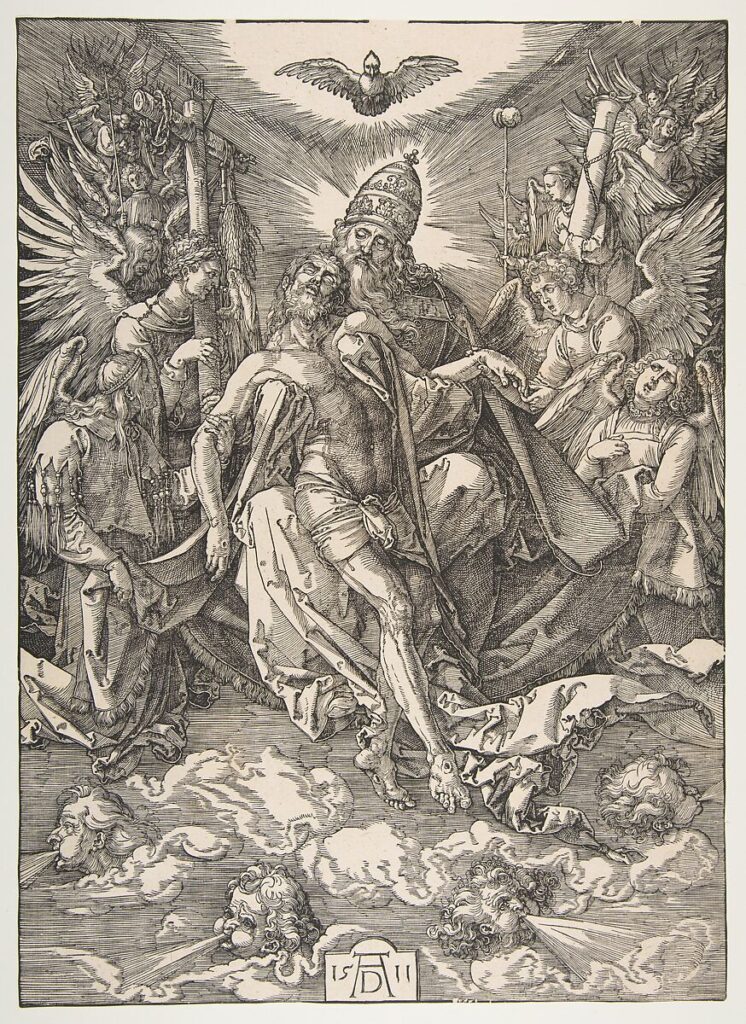Holy Spirit
The Feast of the Most Holy Trinity

The fundamental dogma to which everything in Christianity is related is that of the Holy Trinity, of whom are all things (Epistle) and to whom are to return all those who are baptized in its name (Gospel). Therefore, after reminding us in turn of God the Father, Author of the creation, of God the Son, Author of the redemption, of God the Holy Ghost, Author of our sanctification, the Church chiefly recapitulates on the Feast of the Most Holy Trinity the great mystery which calls on us to recognize and adore in God the unity of nature in the Trinity of Persons (Collect).
The dogma of the Trinity is everywhere affirmed in the liturgy. It is in the name of the Father, of the Son, and of the Holy Ghost, that the Mass and the Divine Office begin and end, and that the Sacraments are conferred. All psalms end with the Gloria Patri, all hymns with the Doxology, and the prayers with a conclusion in honor of the three Divine Persons. Twice in the Mass we are reminded that it is to the Holy Trinity that the Holy Sacrifice is offered.
The Feast of the Holy Trinity owes its origin to the fact that the ordinations of Ember-Saturday, taking place in the evening, were continued until the Sunday morning, which had at that date no proper Mass.
Sunday is consecrated throughout the year to the Most Holy Trinity, because God the Father started the work of creation on the “first day”, the Son made man rose from the dead on a Sunday morning, and the Holy Ghost descended on the apostles on Pentecost Sunday. There existed a votive Mass, composed in the seventh century in honor of this mystery. When the ordinations were anticipated on the Saturday morning, this votive Mass was celebrated, in some places, on the Sunday, whereas in other places a special Mass was composed for the “first Sunday” or the “second week” after Pentecost. The votive Mass gradually became considered as a special feast of the Holy Trinity; it was extended in 1334 by Pope John XXI and made a feast of the first class by Pius X.